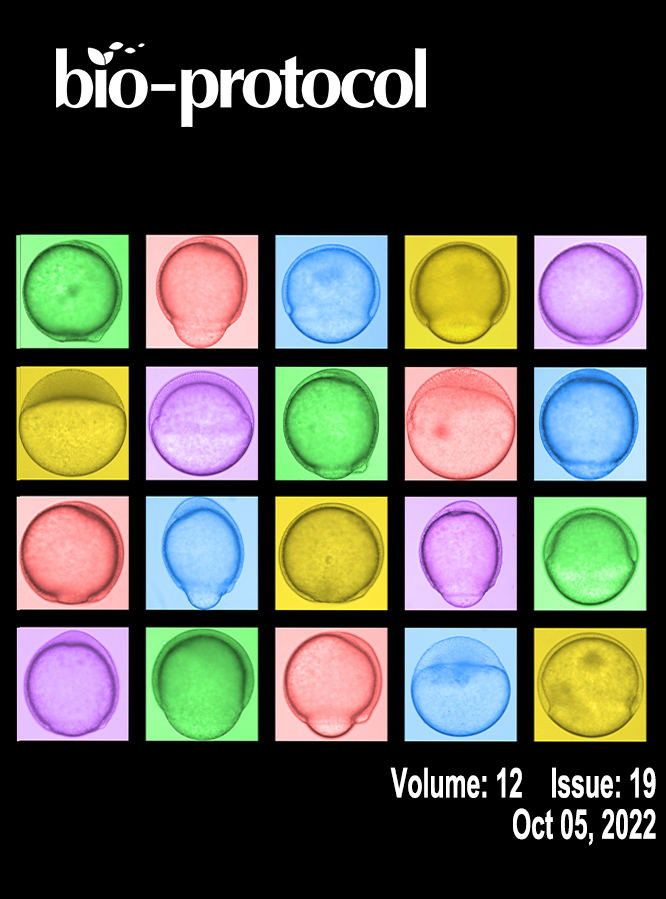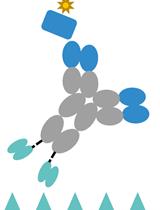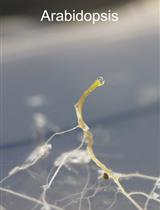往期刊物2022
卷册: 12, 期号: 19
生物工程
Dual-target Bridging ELISA for Bispecific Antibodies
双特异性抗体双靶点桥接ELISA
LIST: A Newly Developed Laser-assisted Cell Bioprinting Technology
LIST:新开发的激光辅助细胞生物打印技术
细胞生物学
CRISPR/Cas9-mediated LRP10 Knockout in HuTu-80 and HEK 293T Cell Lines
HuTu-80 和 HEK 293T 细胞系中 CRISPR/Cas9 介导的 LRP10 敲除
Enhanced Ribonucleoprotein Immunoprecipitation (RIP) Technique for the Identification of mRNA Species in Ribonucleoprotein Complexes
用于鉴定核糖核蛋白复合物中 mRNA 种类的增强型核糖核蛋白免疫沉淀 (RIP) 技术
药物发现
Gastrulation Screening to Identify Anti-metastasis Drugs in Zebrafish Embryos
原肠胚筛选以识别斑马鱼胚胎中的抗转移药物
免疫学
Flow Cytometry Analysis of SIRT6 Expression in Peritoneal Macrophages
腹腔巨噬细胞中 SIRT6 表达的流式细胞术分析
微生物学
Assay for Protealysin-like Protease Inhibitor Activity
蛋白酶样蛋白酶抑制剂活性测定
神经科学
A Simplified Paradigm of Late Gestation Transient Prenatal Hypoxia to Investigate Functional and Structural Outcomes from a Developmental Hypoxic Insult
妊娠晚期短暂性产前缺氧的简化范式研究发育性低氧损伤的功能和结构结果
植物科学
Extraction and Quantification of Plant Hormones and RNA from Pea Axillary Buds
豌豆腋芽植物激素和 RNA 的提取与定量
Collection of Xylem Exudates from the Model Plant Arabidopsis and the Crop Plant Soybean
从模式植物拟南芥和农作物大豆中收集木质部分泌物












